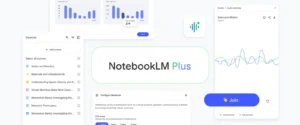Is prompt engineering a passing fad? Will AI learn to prompt itself based on your desired outcome?
Writing for Harvard Business Review, Oguz A. Acar believes that “AI Prompt Engineering Isn’t the Future.” Instead, he believes the future lies in prompt formulation and problem solving.
The truth is that prompt engineering is a continuous experiment and unique to each AI model. And as Acar suggests, alternative approaches are boundless.
Tell the chatbot that the output is important to your job or project or give it encouragement, “you are the smartest GPT in the world” or use words that “make it fun” and your outcomes will differ and elevate.
Prompt engineering is an art.
Explore generative AI in different scenarios.
Beyond multimodal inputs (text, voice, image), generative AI also has the ability to engage in a variety of scenarios and personas. Collaborate with the AI equivalent of Steve Jobs, Albert Einstein, Jerry Seinfeld, Abraham Lincoln, Walt Disney, or whomever or whatever you choose for the task at hand.
Here are some examples to get your started…
Chain of Thought: Chain of Thought prompting is an advanced technique used to enhance the reasoning and problem-solving capabilities of large language models (LLMs). It involves breaking down complex queries or tasks into a series of interconnected prompts, guiding the AI model through a step-by-step thought process. Steps include: 1) Initiate the chain. 2) Break down the problem into smaller, more manageable steps or sub-tasks. 3) Reason, guide step-by-step. At each stage, the model builds upon the previous step’s output, gradually working towards the final solution. 4) Arrive at the solution, supported by the transparent reasoning chain you have produced in collaboration.
Immersion: Imagine you’re a sentient quantum particle in a double-slit experiment. Can you narrate your experience from the moment you’re fired towards the slits until you hit the detector screen?
Role Playing: Write a dialogue between Picasso and Einstein, discussing how Cubism and the Theory of Relativity can reflect each other.
Sentient: Imagine if English was a sentient being. Write a conversation between English and Latin discussing the evolution of languages.
Fantastical: Describe the sound of Beethoven’s Symphony No. 9 to someone who has never been able to hear.
Navigating LLMs is a science.
Specific approaches result in specific training and outcomes.
Fine-tuning is intended to train a model for specific tasks.
Prompt engineering aims to elicit better AI responses from the front end.
Prompt tuning combines these, taking the most effective prompts or cues and feeding them to the AI model as task-specific context.
Chain-of-thought promoting guides LLMs through a step-by-step reasoning process to solve complex problems.
Prompt formulation is rooted in problem formulation, identifying, analyzing, and delineating problems. Once a problem is clearly defined, the linguistics nuances of a prompt become tangential to the solution.
Prompt engineering dead. Long live prompt engineering.
Is prompt a trend or a fad?
Hardly.
But it does take practice, creativity, and patience.
In fact, sometimes it’s just better it’s better just to ask a LLM to improve itself .
That’s what Rick Battle and Teja Gollpudi in their paper, “The Unreasonable Effectiveness of Eccentric Automatic Prompts.”
Battle and Gollapudi systematically tested how different prompts impact an LLM’s ability to solve grade-school math questions. They tested three different open-source language models with 60 varying prompt combinations. They found that results varied and anything but consistent.
Battle and Gollpudi shared their observations with IEEE, “The only real trend may be no trend. What’s best for any given model, dataset, and prompting strategy is likely to be specific to the particular combination at hand.”
Work toward your outcome and partner with LLMs to find the sweet spot for you and your partner in intellectual augmentation.
Legendary music producer Rick Rubin once said, “Be aware of the assumption that the way you work is the best way simply because it’s the way you’ve done it before.”
We are all learning and should always continue to experiment and imagine toward a new and better future.
Stay open. Stay curious.
Please subscribe to AInsights.
Please subscribe to my master newsletter, a Quantum of Solis.

Brian Solis | Author, Keynote Speaker, Futurist
Brian Solis is world-renowned digital analyst, anthropologist and futurist. He is also a sought-after keynote speaker and an 8x best-selling author. In his new book, Lifescale: How to live a more creative, productive and happy life, Brian tackles the struggles of living in a world rife with constant digital distractions. His previous books, X: The Experience When Business Meets Design and What’s the Future of Business explore the future of customer and user experience design and modernizing customer engagement in the four moments of truth.
Invite him to speak at your next event or bring him in to your organization to inspire colleagues, executives and boards of directors.






Leave a Reply